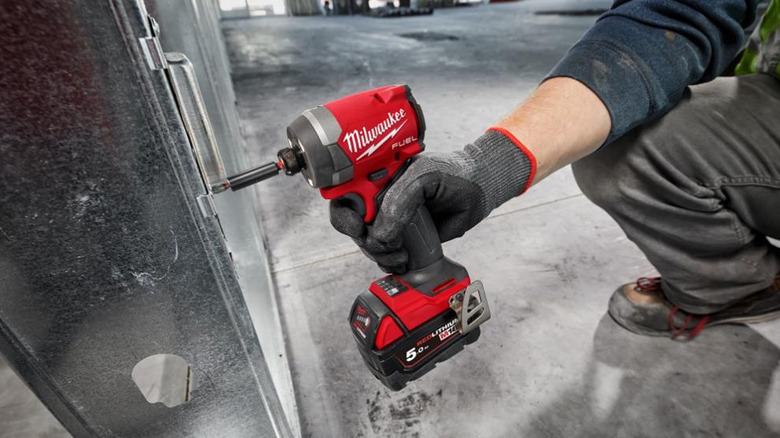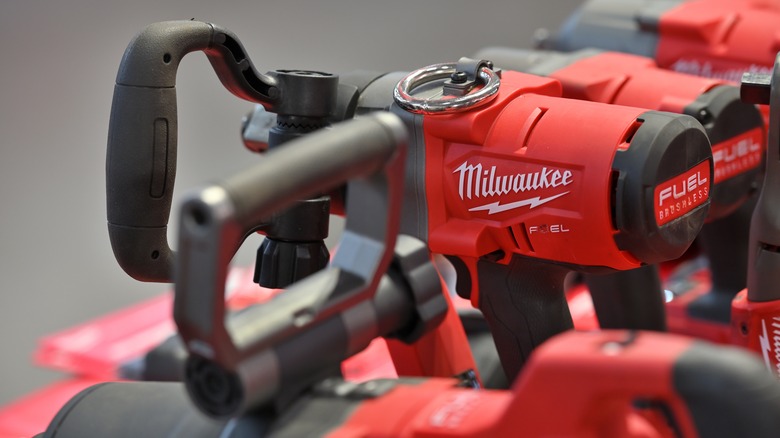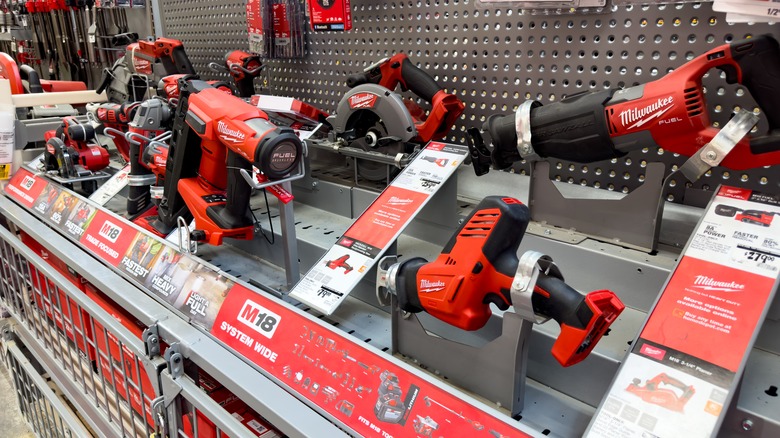Milwaukee Fuel Vs. Regular Brushless Tools: Is There A Difference?
We may receive a commission on purchases made from links.
People looking to get the best performance out of their tools typically gravitate toward brushless motors as those are typically more durable than their non-brushless counterparts. Brushless motors work, as you might guess, without brushes. An electronic controller is instead used to operate the motor, and that comes with some notable advantages. Brushless motors are typically quieter, more durable, more power-efficient, and can also be lighter than brushed motors. Many tool manufacturers give buyers the choice between brushed and brushless, and the brushed motors are usually the budget-friendly pick. Milwaukee has an additional tier of hand tools as part of its brushless line of power tools called Fuel (not to be confused with MX Fuel), which is an improvement over its standard brushless tools.
The Fuel line still has a brushless motor, but this line boasts Milwaukee's top-of-the-line Powerstate motor that offers more torque and faster speeds than its normal brushless motor. On top of the performance gain, you get quality-of-life upgrades with the Fuel line, too, like a tri-LED light that does a better job illuminating dark areas by eliminating shadows over the single-light offerings you see on other tools. This might be overkill for basic DIYers, but bigger jobs benefit from what the Fuel line offers. As an added bonus, most Milwaukee brushless tools have the M18 branding which means the company's 18V batteries respectively are interchangeable. This makes it so you can save costs by omitting battery purchases once your collection is large enough.
How does Milwaukee Fuel compared to regular brushless?
Using the Milwaukee impact driver as an example, the M18 Fuel iteration delivers 2,000 in-lbs of torque and gets up to 3,900 rpm for $149 thanks to the upgraded Powerstate motor. The impact driver also has enhanced trigger control through the Redlink intelligence system that comes with an auto stop function along with the aforementioned tri-LED light. For $139, the regular brushless version of the same tool has 1,700 in-lbs of torque and 3,600 rpm, but it's missing those fancy bells and whistles — although it's lighter at 1.7 lbs compared to 2.55. A Milwaukee brushed motor impact driver costs $119 and delivers 2,750 rpm and 1,500 in-lbs of torque while weighing 2.3 lbs.
Comparing the Fuel version of the circular saw to the regular brushless option, there's a difference of 800 rpm between the two, 5,800 versus 5,000. Milwaukee says the Fuel saw can match the power of a 15 amp corded saw. The Fuel saw has the same Redlink system as the impact driver that gives overload protection and ensures you're getting the optimal performance. This performance gain comes at a steeper price than the impact driver as the Fuel version comes in at $249 while the regular brushless version is $199.
Is Milwaukee Fuel worth it over regular brushless?
The Fuel line is the strongest Milwaukee offers, but that doesn't mean you should fill up your toolbox with all Fuel products. Although the Fuel tools are overall stronger than their counterparts and packed with more features, they come at a higher price.
If you're somebody who doesn't need a ton of power for around-the-house jobs, you're unlikely to take advantage of the added performance Fuel has to offer, and even brushless motors might be considered overkill. On the other hand, tackling projects like making a patio, table, building bookshelves from scratch, etc., could benefit from stronger tools. Not every DIYer does things like that, and if you don't then you can save a lot of money over the long run.
In cases where the price difference is insignificant, like the previously mentioned impact driver, then spending a few extra dollars for the performance is an easy pill to swallow. It's much tougher to justify a $50 difference, and that's where you'll need to be honest with yourself about your needs. There's nothing wrong with buying tools that have more power than what you'll use, but if you end up spending hundreds of extra dollars while building out your DIY workshop, it can be an issue.


